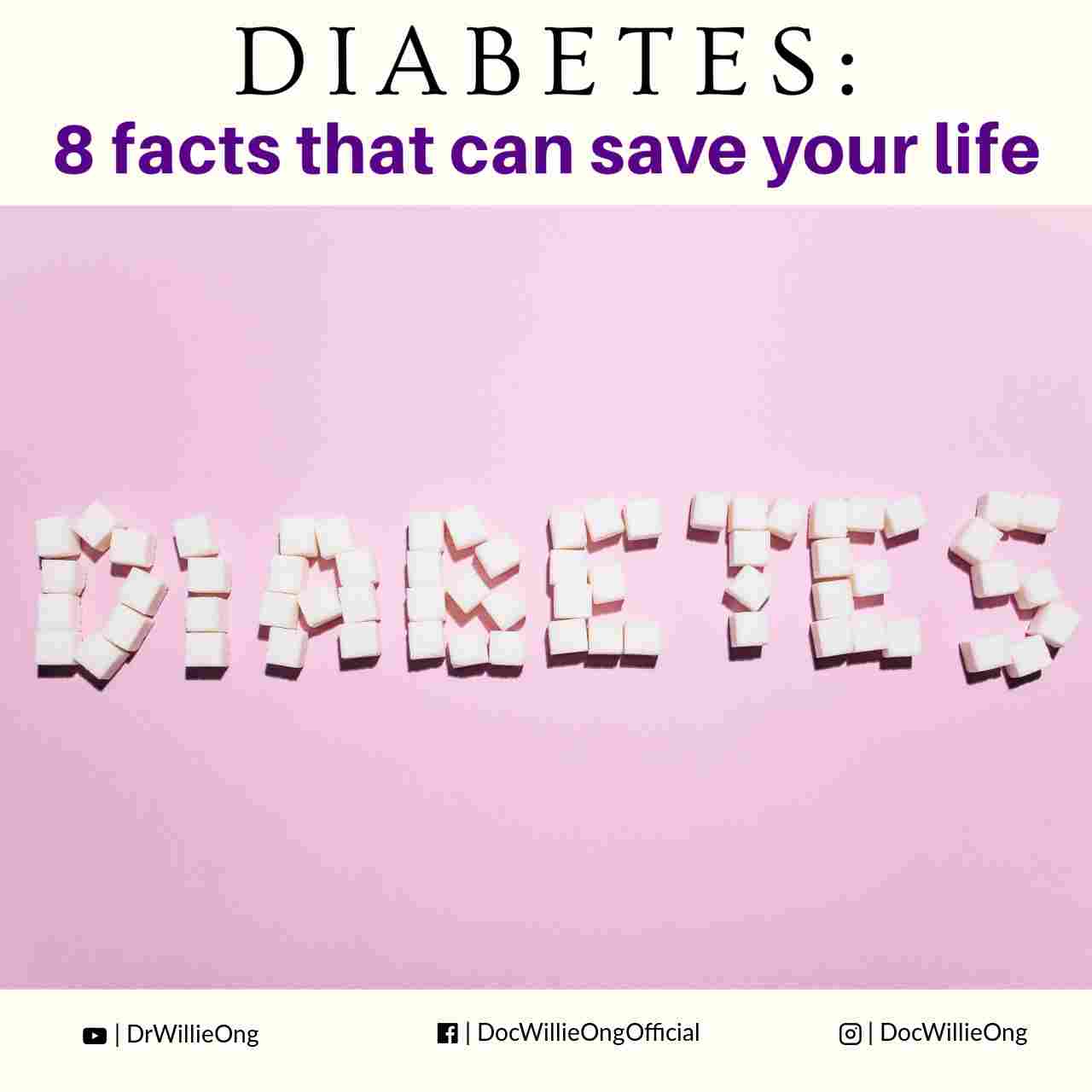By Dr. Willie Ong
If you are diabetic and reading this article, chances are your blood sugar is not controlled. Having a slightly elevated blood sugar level is not good for you. Should you be worried? Yes. Should you go for changes in your life? Yes. New studies have shown that your pancreas gets damaged even with borderline blood sugar levels. Here are more facts.
Doctors are not doing enough to control your blood sugar.
Half of all diabetics worldwide have poor control of their blood sugar levels. Some patients complained, “My doctor does not take my concerns seriously.” Maybe be because the doctor is unaware of the latest studies. Showing that tight control of blood sugar is needed to prevent diabetes complications.
Don’t be satisfied with a Hemoglobin A1C of below 7% or post-meals readings of under 200 mg/dl.
Aim for better control. Get your blood sugar down to safer levels. Your goal is to keep your A1C level below 6.5%, your fasting blood sugar below 100 mg/dl (5.5 mmol/L), and for your post-meal sugar below 140 mg/dl (7.8 mmol/L) at all times!
If a person reaches diabetes levels, half of the beta-cells in his pancreas are already destroyed.
Diabetes is a progressive disease and worsens as we get older. One of the most annoying things about diabetes is that it has no symptoms for the longest time. When you are young, you can eat junk foods and soft drinks and sweet foods you want, and you still have normal blood sugar. Until your beta-cells start to die. Half of the patient’s beta-cells are destroyed upon diagnosis of diabetes. And the sad fact is that diabetes is progressive. The longer you are diabetic, the more your pancreas becomes destroyed. Estimates show that diabetics have only 25% of their beta-cells functioning at 5 years from diagnosis. That’s why diabetics need more medicines as they get older. The lesson is to confront your disease early
Near-normal blood sugar levels are not good enough.
An intriguing study in the Diabetes journal (2003;52:102-110) shows that serious organ damage already occurs at blood sugar levels doctors consider to be near-normal. A team of researchers autopsied the pancreases of deceased patients who were known to have had fasting blood sugars between 110 mg/dl and 125 mg/dl within two years of their deaths. They found that these patients, whose blood sugar was not high enough for them to be diagnosed as diabetic, had already lost, on the average, 40% of their insulin-producing beta-cells. The study concludes that beta-cells start to die off in patients whose fasting blood sugar is just over 110 mg/dl (6.1 mmol/L).
Monitoring of blood sugar is easy and not painful.
A blood sugar tester costs around P4,000. Each strip would cost around P60. To lessen the pain, prick at the sides of the little finger, which has fewer nerve fibers. check your blood sugar daily in the morning. You may test your blood sugar once week or twice. Record the dates and numbers in a notebook.
Soft drinks and lack of exercise can make you diabetic.
Recent studies shows that intake of soft drinks, lack of exercise are correlated with the incidence of diabetes. The more you drink soft drinks, the higher the chances of becoming diabetic. Does this include diet drinks, you ask? I personally believe diet drinks are bad for your health. Specially for diabetics. Kidney specialists will tell you that the phosphorous in dark-colored sodas can cause your body to lose precious calcium in the urine, possibly leading to osteoporosis. Water is the best fluid for the body.
For long-term monitoring, test your Hemoglobin A1c blood levels. Be sure it’s below 6.5%.
For patients and doctors, Hemoglobin A1c (A1c) is the best monitoring test for diabetes. The A1c is a blood test that measures how much sugar is bound to the hemoglobin your red blood cells. This is a test that sneaky diabetics can’t cheat. Unlike Fasting Blood Sugar test or FBS. It can be manipulated if you diet for a day.
For frequent monitoring, keep your fasting blood sugar below 100 mg/dl, and your post-meal sugar below 140 mg/dl or else!
Interesting fact: If you test normal individuals, you will find that even after they eat a heavy meal, their blood sugars don’t go over 120 mg/dl (6.6 mmol/l). After two hours, they are usually back to normal, which is below 100 mg/dl. This is what a healthy pancreas can do for you.
In 2007, The International Diabetes Federation adopted the 140 mg/dl (7.8 mmol/L) post-meal blood sugar target. A study by Dr. Krinsley (Mayo Clinic Proc., Jan 2004) shows that keeping blood sugar below 140 mg/dl at all times improves survival of seriously-ill patients.
If you’re not yet diabetic, the first to rise is your post-meals sugars.
The University of Utah Neurology Clinic (Diabetes Care 24 :8, 1448-1453, 2001). They examined patients who were complaining of pain, tingling or burning sensations in their hands and feet. They found out that these patients (were not known diabetics) registered 140 mg/ml or higher post-meals sugar. Many patients had a normal fasting blood sugar levels, and A1c tests. This study is significant, many doctors do not offer their patients an oral glucose tolerance tests (OGTT) to detect diabetes at an early stage.
Finally, there’s a tip coming from Filipino diabetes pioneer. Dr. Ricardo Fernando. According to Dr. Fernando, a fasting blood sugar of 90 mg/dl is high already if you have a first-degree relative with diabetes. Even at this low level, you can start your diet and institute lifestyle changes.
The message is simple. Diabetes is a killer disease and we should not be complacent. See a Doctor.



